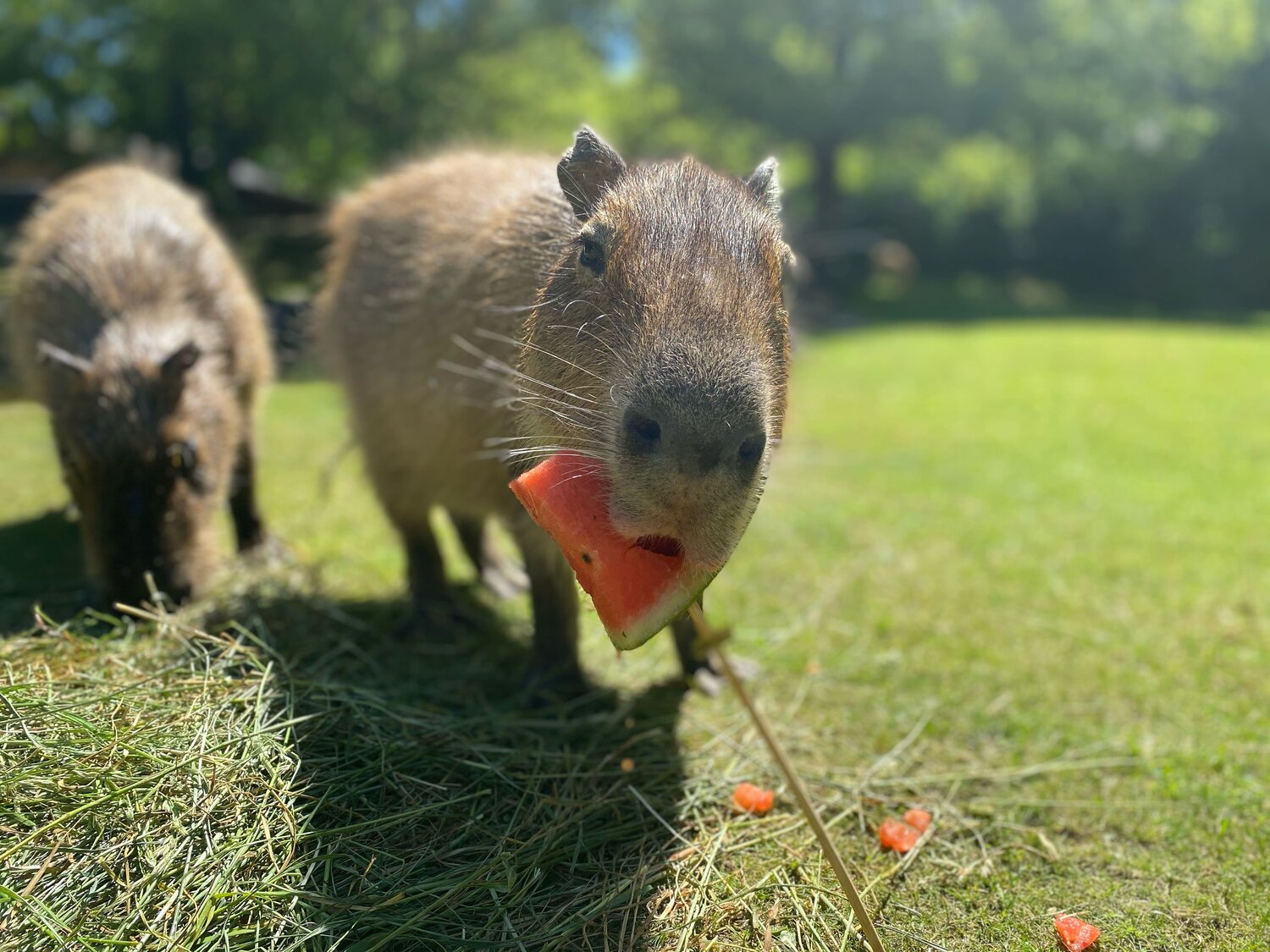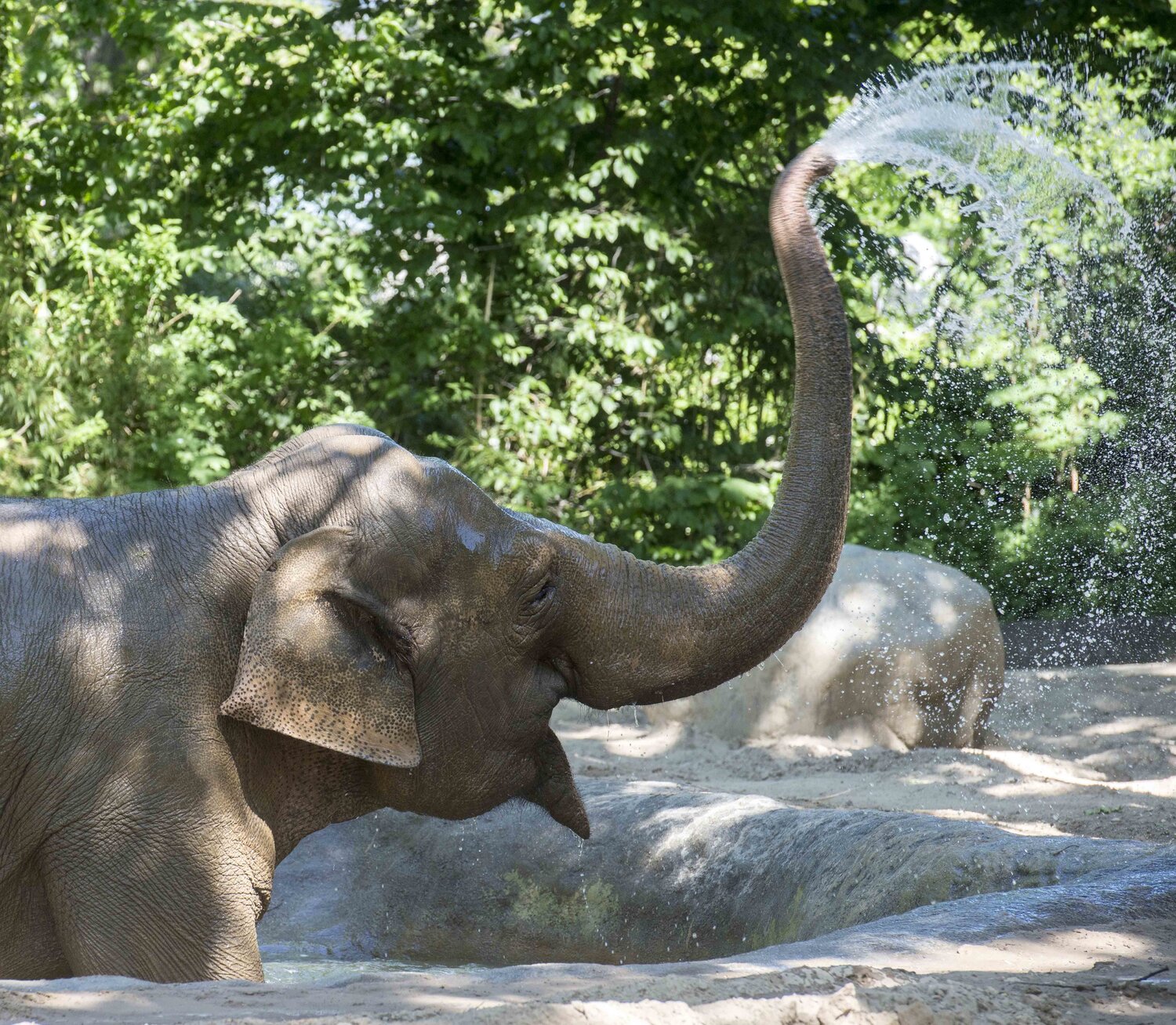During the dog days of summer, the elephants, tigers, giant tortoises etc. at Zoo and Tierpark Berlin can look forward to some refreshingly different treats. Capybara Marley got to tuck into iced melon on a stick before her lively pups got a taste of the sweet fruit and started competing with Mum. Most of the around 30,000 animals in the Zoo and Tierpark cope just fine with the heat, and those that are more sensitive to high temperatures, such as the pandas, can retreat to shady indoor areas or the cool of the pool.
- During the summer, the animals enjoy ice-cold treats to help them cool down. The lions at the Zoo and the Sumatran tigers at the Tierpark were given frozen meat to lick. Their extraordinarily rough tongues, which resemble coarse sandpaper, shave off flakes of tasty meat with every slurp.
- Unlike most other cats, Sumatran tigers feel at home in the water, so on hot days they can take a refreshing dip. The webbing between their toes makes them agile swimmers.
- The Asian elephants in the Zoo keep cool by giving themselves a sand shower, which protects their skin from both the sun and irritating bugs. Alternatively, they can dip their trunks in the cool water. Sometimes, they even submerge themselves completely in the bathing pool and use their trunks as a snorkel. They also drink up to 150 litres of water per day.
- The capybaras – the world’s largest rodents – made short work of the chilled melon slices on sticks they were given by their keepers. The heat is no problem for capybaras. When temperatures rise they can spend minutes at a time under water – and can even close up their nostrils. In the wild, capybaras live in the Amazon rainforest and on the flooded savannahs of South America.
- The Tierpark’s Seychelles giant tortoises got a refreshing shower to beat the heat. They don’t have teeth with which to chew their summer snacks; instead they use their horny beaks. As an adaptation to their dry habitat, the giant tortoises, which weigh up to 250 kg, not only drink through their mouths: because there are hardly any bodies of water in their natural habitat, they have evolved to take in even the smallest amounts of water from fissures in the rock through their nostrils.
- The Zoo and Tierpark are also taking care of inhabitants that are used to colder climes. The panda family, for instance, can cool off in the stream or bathing pool, or retreat to the cool rocks of their air-conditioned indoor habitat.
- The coldest place in Zoo Berlin has the same temperature year round: the king penguins and rockhopper penguins in the Penguin House are accustomed to constant temperatures of around 9°C.
“Most of the animals here cope very well with the heat; the majority of them come from warm regions anyway,” says Zoo and Tierpark Director Dr Andreas Knieriem. “However, they clearly enjoy all our efforts to keep them cool.” Zoo and Tierpark visitors can also find refuge from the hot sun, he adds: “Our large, old trees offer plenty of shade for animals and humans alike.” The children’s water play area at the Tierpark has also recently reopened. As of today, there is no longer a legal obligation to wear medical masks in the outdoor areas of the Zoo and Tierpark. However, a medical mask must still be worn when it is not possible to maintain the required minimum distance from other people. Also as of today, there is no need to present a negative test result to gain admission to Aquarium Berlin and the shops.

